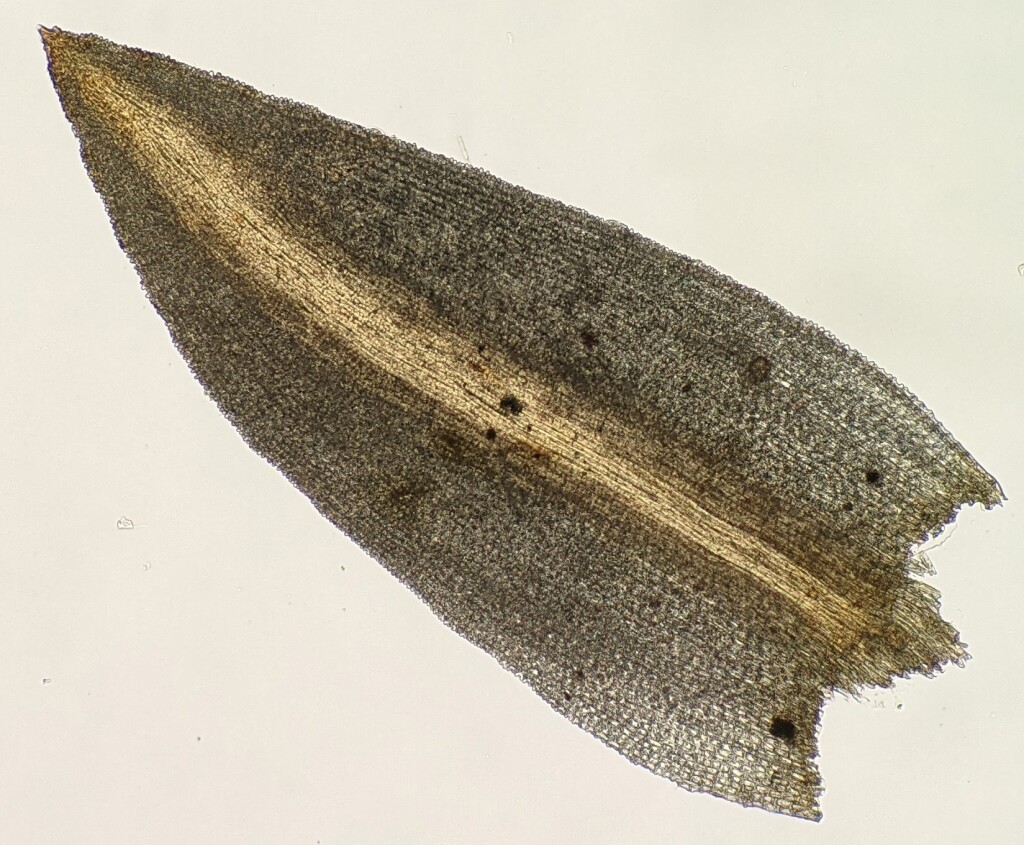Chrysoblastellaceae
Dioicous. Asexual reproduction possibly by the detachment of branches that arise from tubers. Loose tufts on soil. Stems erect, simple or branched, with sparse rhizoids; central strand present, well-defined. Leaves rigid, erect-spreading when moist, little altered to incurved or appressed when dry, arranged in three distinct helicoidal rows, monomorphic, not sheathing; apices obtuse or acute, without a hairpoint; costa percurrent; margins entire or with occasional teeth at apex, plane to ±recurved in basal half, without a border; laminal cells mostly bistratose, quadrate to short-rectangular in apical half, rectangular at base, smooth or weakly papillose at base, otherwise papillose. Acrocarpous. Capsules erect, exserted, straight or slightly curved. Calyptra cucullate, smooth, glabrous. Operculum rostrate. Peristome of 16 endostome teeth irregularly divided almost to base into 2 filaments, but often fused at apex, and a partly reduced exostome composed of bifid teeth at least 1/4 endostome length, adherent to the endostome for 80% of length.
1 species in south-east Australia, New Zealand, Macquarie, Campbell and South Georgia Islands and South America, south from Bolivia.
Chrysoblastella chilensis (Mont.) Reimers has been included in the Ditrichaceae (e.g. Goffinet et al. 2009). However, in phylogenetic analyses of chloroplast DNA sequences Chrysoblastella chilensis is closer related to other families than it is to Ditrichaceae, supporting its recognition as a distinct family (Santos et al. 2021). The phylogenetic placement of Chrysoblastella reported by Fedosov et al. (2016) in one of a few small ‘proto-haplolepideous’ lineages that diverge basally to the core haplolepideous lineage is erroneous as the alleged Chrysoblastella sample was misidentified (Santos et al. 2021). Chrysblastella is instead placed well within the core haplolepideous lineage (Santos et al. 2021).
Chrysoblastella was synonymised with the Mediterranean Cheilothela (Hilpert 1933). Cheilothela was shown to be closely related to other Ditrichaceae genera and well separated from Chrysoblastella in chloroplast phylogenies (Santos et al. 2021), supporting its distinction from Cheilothela, previously proposed based on morphology (Buck 1981). Chrysoblastella can be distinguished from Ditrichaceae by its peristome. In Chrysoblastella chilensis a reduced exostome or prostome is present opposite to the endostome, is adherent to the endostome for 80% of the prostome length and is at least a quarter of the endostome length (Buck 1981; Fedosov et al. 2016).
 Spinning
SpinningBuck, W.R. (1981). A review of Cheilothela (Ditrichaceae). Brittonia 33: 453–456.
Fedosov, V.E.; Fedorova, A.V.; Fedosov, A.E.; Ignatov, M.S. (2016). Phylogenetic inference and peristome evolution in haplolepidous mosses, focusing on Pseudoditrichaceae and Ditrichaceae s.l.. Botanical Journal of the Linnean Society 181: 139–155.
Goffinet, B.; Buck, W.R.; Shaw, A.J. (2009). Morphology, anatomy, and classification of the Bryophyta, in Goffinet, B & Shaw, A.J. (eds), Bryophyte Biology, 2nd edition, pp. 55–138. Cambridge University Press, Cambridge.
Hilpert, F. (1933). Studien zur systematic der trichostomaceen. Beihefte zum Botanischen Centralblatt.
Santos, M.B.; Fedosov, V.; Hartman, T.; Fedorova, A.; Siebel, H.; Stech, M. (2021). Phylogenetic inferences reveal deep polyphyly of Aongstroemiaceae and Dicranellaceae within the haplolepideous mosses (Dicranidae, Bryophyta). Taxon 70: 246–262.
